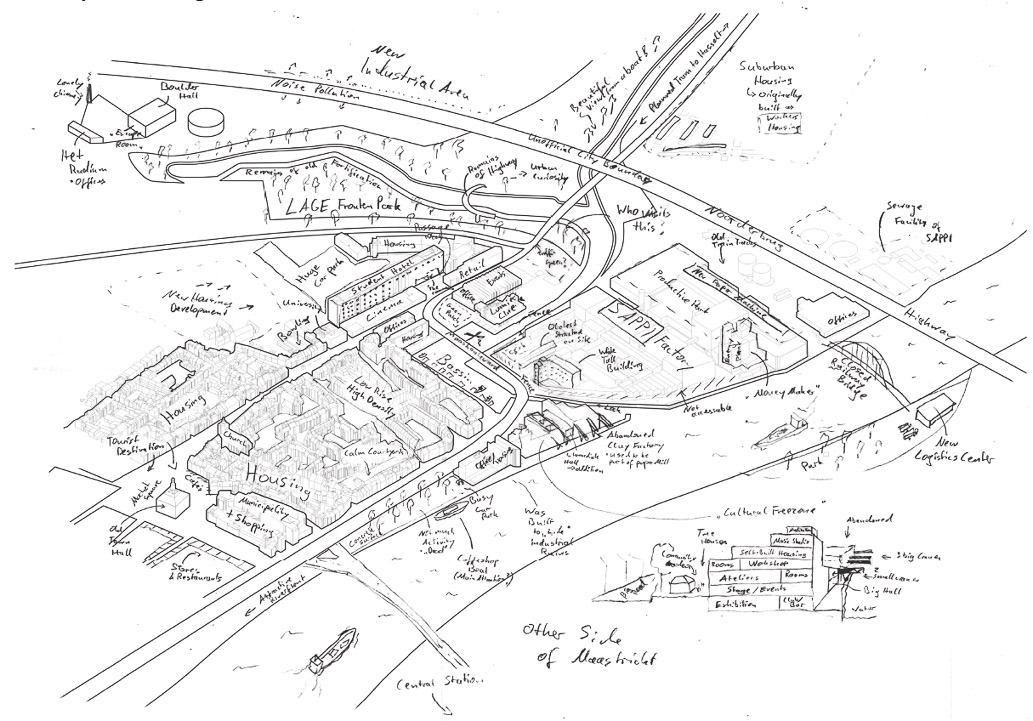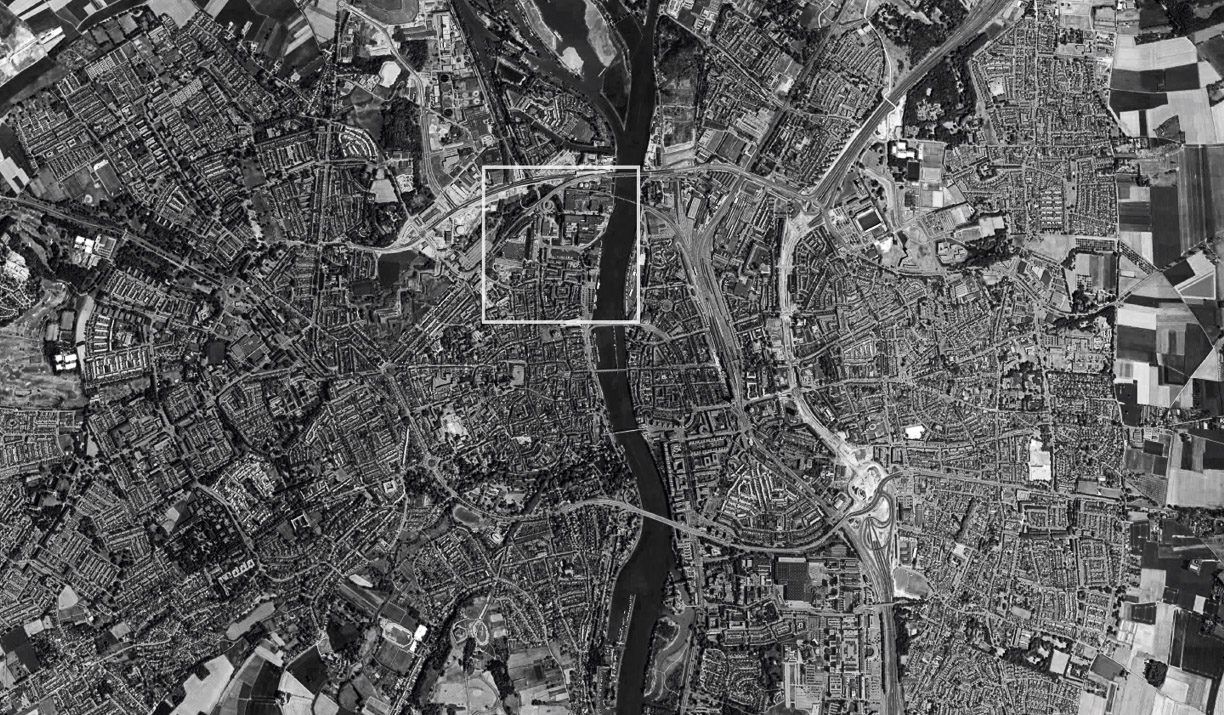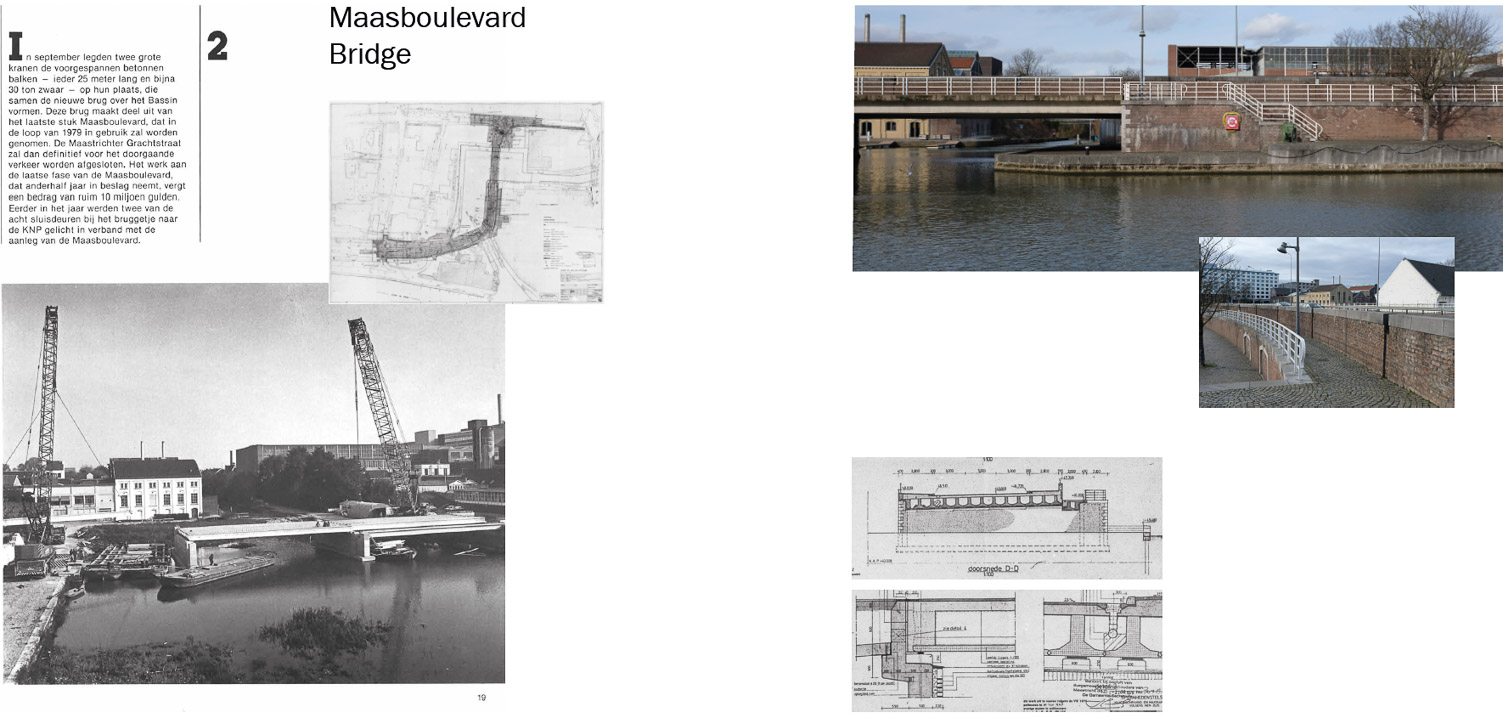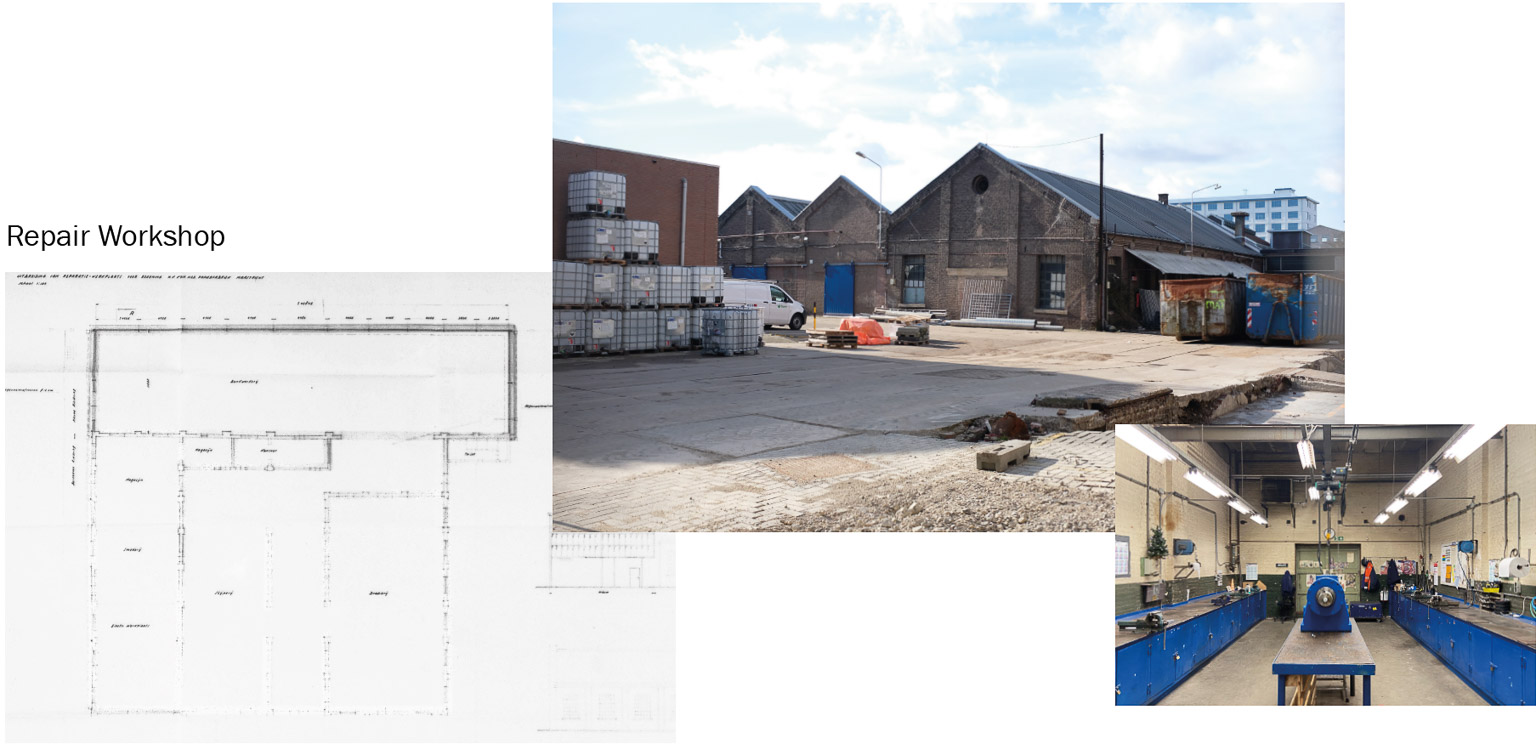Maastricht, 2022
Within the framework of assemblage theory, anything that is part of the city can be of interest. In an attempt to bundle the large amount of research we had collectivly gathered as a studio, I developed this soft map that aims to spatially capture the information onto one sheet. My hope was that I would be able to find connections between seemingly unrelate ‚entities‘ on the site.

The term assemblage is derived from the French word ‚agencement‘, which refers to both agency and arrangement. The main idea behind this theoretical framework, which originates from the field of sociology, is that it considers places, things, entities, etc. as ‚contingent‘ assemblages, which are made up of heterogeneous elements: human/non-uman, organic/inorganic, technical/natural.
the same principles can be applied to understanding a city. A tram, an electricity cable, a neighbourhood cafe, a laptop, a social rent policy, and a vacant factory building might all seem like independent entities at first, but within the complexity of an urban environment, new relations can result in very real changes in the environment. Therefore, understanding these relations and making use of the existing capacities at hand can be seen as a resourceful approach as in how to work on the city.




